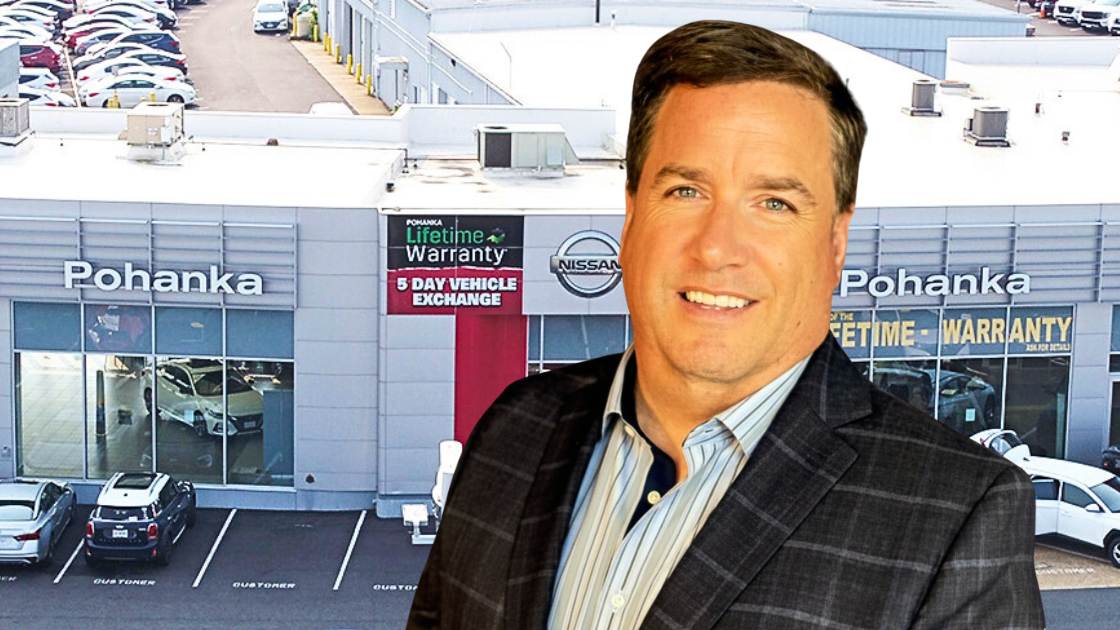
Welcome to another episode of the Car Dealership Guy Industry Spotlight, a podcast series hosted by Sam D’Arc, highlighting standout dealerships and innovative companies, and exploring the trends driving success in today’s automotive market.
Today’s guest is David Steinberg, CEO and Founder of Foureyes, who discusses how a new approach to data is boosting AI performance like never before. David is a long-time entrepreneur who has leveraged his knowledge of data to build effective software solutions for a range of industries, including retail automotive.

1. Adjusting AI for the dealership.
By the time Foureyes was started, the average number of vehicles salespeople sold per month hadn’t changed in three decades. Figuring out how to improve this metric was priority No. 1, but things didn’t go as planned.
“We thought that we were gonna find this golden orb, this magical KPI, where we could measure this, where we could open it up and we could say, this is the KPI to measure.”
Rather than finding a miracle, what the Foureyes team instead uncovered was that the sales process was the most important foundation of a successful dealership.
2. Back to the drawing board.
David explains that as artificial intelligence began to grow more powerful, experiments began to see how it could improve the sales process. Early results were disappointing.
“AI was creating a lot more conversations with users, but again it wasn’t moving the needle, it wasn’t actually changing the end outcome.”
After going back to the drawing board, the Foureyes team realized successful dealers were using a metric that no one had yet recognized: match rate.
3. Match rate: the most overlooked metric in car sales.
Successful dealers are now looking at their “match rate” or how often the listings in their inventory are what buyers are looking for—down to the exact model and configuration they want. The reason AI tools initially weren’t making as big of an impact was that they weren’t designed to match customers with products.
“A lot of the AI that’s being built right is driving towards appoints…but it’s not actually improving match rate.”
Foureyes examined what would happen if an AI was designed solely to improve match rate using customer data. What they discovered was exciting.
“The AI that’s specifically designed to improve match rate…that is the only thing we’ve found that directly correlates to improving sales outcomes.”
4. Match rate challenges.
Matching customers with the right vehicle is more complicated than it may seem. David explains that certain cars are easy to sell, and most AI tools (and salespeople) will focus on selling those cars. But matching buyers with niche models is more difficult…even though it’s also more beneficial to the dealership.

Foureyes - No one buys a car because AI bombards them about test drives. They buy when they find the right match on your lot. That's why Foureyes built inventory-based text messaging -- to match your buyers to your vehicles. It sends updates about price changes, new arrivals, and suggested alternatives for vehicles your prospects want. Foureyes' AI even answers those nitty-gritty questions about trim levels, engine specs, heated seats, and more. Try it for free or book time with us at NADA (booth #3563)! Learn more at foureyes.io/resources/inventory-based-texting-release.
5. Why AI products don’t improve match rate.
To really boost their sales for these harder-to-match vehicles, dealers need to pair their salespeople with the right technology. Unfortunately, many retailers have prioritized the wrong approach.
“The problem is so many dealers are trying to say how do we get rid of the salesperson in the exchange or how can we minimize their role.”
This has led to the creation of AI tools that attempt to replicate staff. However, David explains that this has had the effect of making the process more frustrating, forcing buyers to communicate with ineffective bots rather than real people. By instead using better, less invasive tools to enhance their staff’s performance, dealers can drive much better results.
6. Fixing the problem.
In terms of match rate, the best solution is the one that can identify the exact vehicle a customer is looking for and match it with one in a dealer’s inventory, leaving the rest of the sales process in the hands of the human. Data collection is key for this process, but many data tools either don’t do a good enough job at collecting the necessary information or collect so much information that it becomes impossible to decipher.
“For instance one of the reasons why third-party leads that the OEMS are delivering don’t perform well at all is the match rate data there is horrible…It’s leaving the salesperson up to do all that heavy lifting.”
7. Improving data.
This means that data collection tools shouldn’t just obtain data, they should also be able to clean and organize that data. Customer wants/needs, like trim, color, features, etc., need to be stored and sorted in order for the AI and salesperson to effectively use the information.
“It’s about the prep work before it gets to AI, to clean and organize that, and then you give that to the AI and you give it the mission to represent the inventory.”
If the information is properly maintained, it becomes far more valuable, allowing AI to better analyze and leverage the data, which in turn boosts the dealer’s match rate.
8. OEM data and leads.
David goes on to note that struggling OEMs often purchase leads to give to their retailers, only for them to discover that the leads go nowhere. While the automaker may have wanted to help, they instead made it more difficult for dealers to sort through and find high-quality leads. In other words, dealers and their teams don’t just need more data, they need the right data.
9. Measuring success with close rates.
Foureyes uses match rate as the input for its AI–but measuring success is more complicated. To track how effective its solution is, David notes that his team analyzes close rates.
However, he adds that these can sometimes be deceptive when it comes to measuring salesperson performance. Close rates should always be judged against the number of leads a staff member receives: if someone sells 40 cars a month but fails to convert more than a small fraction of their leads they might not be meeting their full potential, even if they are seeing relative success.
10. Data collection headaches.
Data collection continues to cause headaches, not just for consumers but also for vendors and dealers. Most of this is due to poor privacy practices.
“Many CRMs are not sharing opt-out. So if you opt-out of communication they’re not giving that to the vendors that are communicating with your customers.”
David recommends that dealers follow the California Consumer Privacy Act (CCPA), widely considered to be the toughest data laws in the U.S., even if they don’t live in the state. Telling their vendors that they adhere to the CCPA will weed out any companies with lax standards.
Did you enjoy this podcast recap?
Interested in advertising with Car Dealership Guy? Drop us a line here.
Want to be considered as a guest on the podcast? Add your name here.








